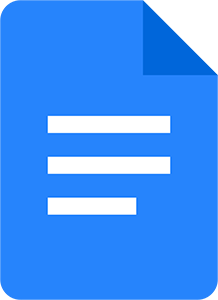Google Docs

Introduced on March 9, 2006, after Google acquired Writely, Google Docs is a free word processor web application that is part of the Google Drive suite. It includes nearly all the capabilities of a traditional word processor like Microsoft Word. Google Docs offers the benefit of cloud storage, which means that users' documents are saved automatically, and may be retrieved even if their hard drive or SSD (Solid-State Drive) fails. Google Docs is also accessible using a smartphone on the website or the Google Docs app.
Google Docs features
- Supports all types of text formatting, fonts, and other settings available int today's word processors.
- The ability to insert images and other media.
- The use of various templates.
- Real-time collaborative editing for sharing between computers, devices, and other users.
- Revision history to see all changes and who made those changes.
- One of the best voice to typing options available allowing you to dictate the text you want to type.
- Supports hundreds of different third-party add-ons that add new features.
Supported file types
Google Docs supports many of the traditional word processing file formats including .doc, .docx, .docm, .dot, .dotx, .dotm, .html, .txt, .rtf, and .odt files.
Google Docs limitations
Although Google Docs is a very capable program, it does have some limitations that may affect some users.
- Does not support files with more than 1.02 million characters.
- The Google Doc cannot be larger that 50 MB.
- Cannot have images inserted that are larger than 50 MB.
- Only supports .gif, .jpg, and .png image formats.
How to access Google Docs?
Google Docs and all the files you've created using Google Docs can be found by visiting docs.google.com.
Collaboration, File sharing, Google Drawings, Google Drive, Google Forms, Google Sheets, Google Slides, Internet terms, Productivity tools, Smart chips, Web-based application, Word processor terms
